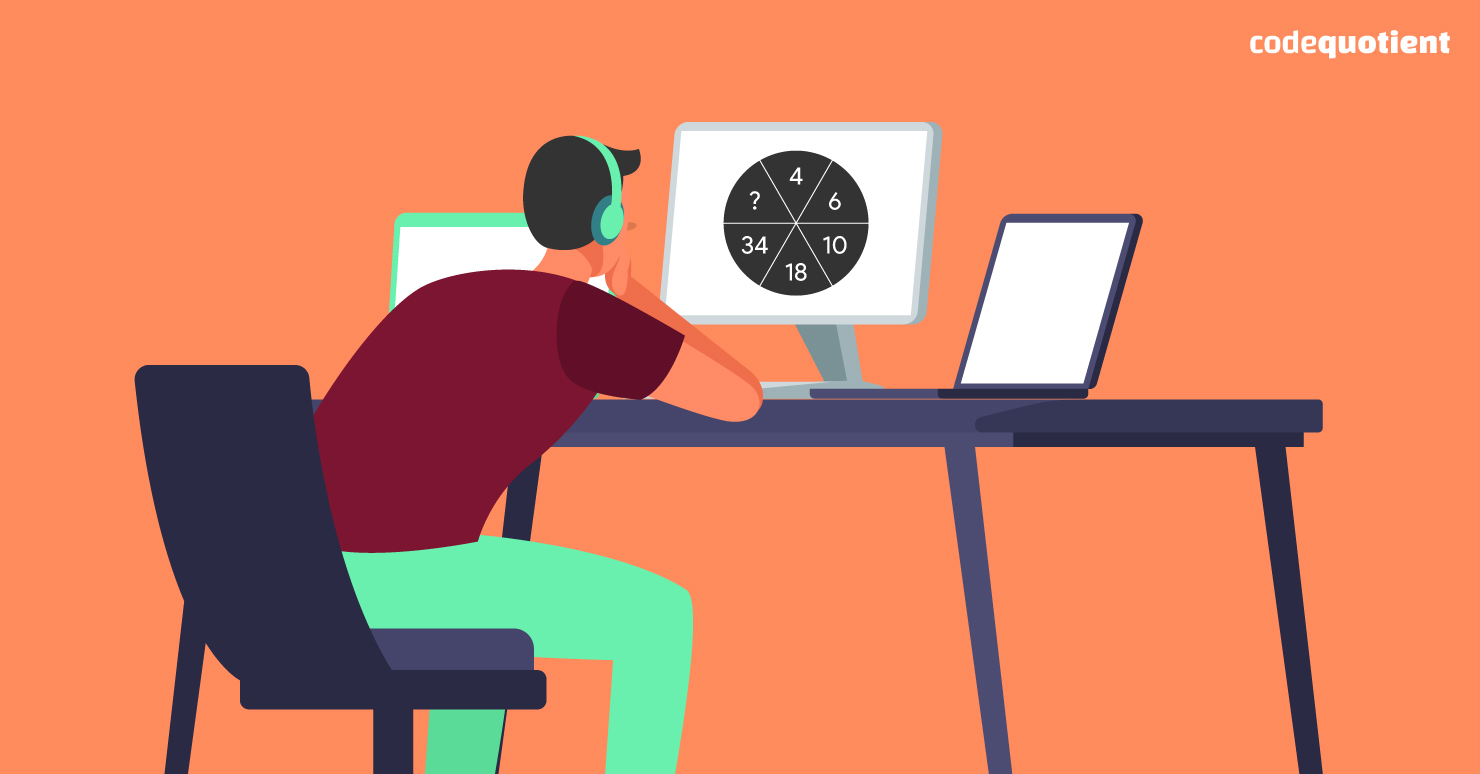We all have heard about the ‘quantitative aptitude’ section in many quizzes and entrance exams to colleges and even jobs.
It is a part of many competitive exams for education and employment. But what is the purpose of this section? And how does it relate to the challenges we face in real life?
Today, quantitative aptitude is an integral part of many competitive job-oriented examinations, including HackWithInfy, CodeVita, NIMCET, CoCubes, Bank Exams, JEE, and even NEET. A candidate with good quantitative aptitude will be in a better position to analyse and make sense of the given data. Companies, big or small, have also begun to include quantitative aptitude in their selection process to test students’ ability to manage data.
5 Tips to Master Quantitative Aptitude Tests

Quantitative aptitude is simply a game of numbers, calculations, and mathematical types of questions. If you’re looking forward to excelling in any of the examinations or preparing for the future, follow these tips and tricks to master quantitative aptitude tests:
Start from the Basics
Concepts are the heart of mathematics, and understanding them is crucial to improving your score in this section.
The first step involves practising a lot of basic mathematics questions.
You may feel nervous while visiting and revisiting these concepts, but once you gain a solid understanding, you will certainly breeze through the test.
Here are some of the common topics for you to begin with:
- Divisibility tests
- Profit and Loss
- Simple Interest and Compound Interest
- Data Interpretation
- Number System
- Sum, arithmetic operations, geometric progressions
- HCF, LCM (Highest Common factor and Least Common Multiple)
- Probability
This will help you learn basic formulas and remember the concepts so you can work on their applications more effectively.
Focus on Rare Problems
We call some questions ‘rare problems’ because they are less in number and generally exceptional.
Since their ratio is already low compared to the common problems, it is preferable to keep them under observation. Why?
Well, for one, you won’t forget the solutions. And two, under so much pressure, it is a great way to score and save a plus 1 for yourself.
Check Up on Your Speed
The famous quote, Time and Tide Wait for None, plays a significant role here. While preparing or giving mock tests, keep a check on the time you spend answering a single question.
It is pretty apparent that the Quant section takes longer to complete than the other sections. This is why many candidates run out of time and struggle to meet the sectional cutoff.
Suggestion: Consider giving online quizzes to learn time management. It will help you concentrate on both accuracy and time management while solving mathematical problems.
Focus on Your Weaker Links
Recognising one’s strengths and weaknesses is a fundamental skill that will help you prepare for any test.
Also, it is then easier to work where you lag. Understanding where you went wrong, let’s say in your first mock attempt, can help you work on your weaknesses and avoid the chances of error in the actual exam.
What’s next?
Practice and truckloads of practice!
Since quantitative aptitude is about solving mathematical problems and doing some smart work, practising is the only key to success.
Grasp the Numbers
Make notes and summarise all formulas and shortcuts you’ve learned so that those can be revised frequently, especially on the night before the exam.
Note: Don’t get used to the grasping part.
Students often start grasping solutions and formulas, which is not the right way to improve their quantitative abilities. Stick to the old and basic, and start solving the problems for real.
In case you get stuck, go back to your notes and revise the concepts. Repeat until you master your quantitative abilities.
5 Tricks for the Most Common Type of Problems

Quantitative Aptitude: Percentage Trick
The most common type of problem is the percentage of questions.
Example: The question asks, “Find 77% of 64.”
In general, you will do 77/100*64 and try to cut the even number. However, this can be time-consuming, and you might just waste a considerable amount of it while trying to come to the solution. Here’s a trick:
We know 100% of 64 = 64, 50% of 64 = 32, 25% of 64 = 16, so we can say 75% of 64 = 32+16 = 48. Now, we are left with 2%, that is 0.02*64 = 1.28 is much easier to calculate.
Hence, the answer becomes 48+1.28 = 49.28!
Isn’t that faster? Practice this a few times, and you will get the hang of it.
Profit and Loss
For-profit and loss type of problems:
We often multiply 45*(1+12/100) for a 12% profit. Here, you can directly multiply your amount by 1.12. This will save a lot of time and reduce the chances of mistakes.
Train Relative Speed
We often come across these questions of relative speech where types of trains happen to cross the bridges or persons.
If a similar problem appears, always remember to ‘add’ the trains’ speed if they are moving in opposite directions and ‘subtract’ if the trains are in the same order. Then, calculate the time of crossing with this relative speed.
This trick saves you time and is most effective for the questions related to finding the train’s relative speed.
Square Root
The next problem that is commonly seen in the quantitative aptitude section is- Finding the square root of unknown numbers. However, the task can be quite hectic.
In this case, here’s a pro trick for you to use:
Suppose your number is 2209, so the unit digit of the given number should be 9. The unit number can be determined with-
3^2= 9 or 7^2=9.
It is estimated that the given number falls between 40^2=1600 and 50^2=2500.
So, the square root of 2209 is either 43 or 47.
Pick a number that lies between 43 and 47. Let’s assume 45.
And 45^2 = 2025.
From this, we can say 2209 is greater than 2025; thus, the answer is 47.
Time & Work Problems
They’re fairly popular, and practising a large number of them can eat up a significant portion of your exam time.
For such problems,
Keep the formula w1m1/d1=w2m2/d2 handy,
where w is the amount of work,
m is the number of men,
and d is the number of days to complete.
This formula helps to calculate the answer much faster and more efficiently.
The best way to prepare quantitative aptitude for your upcoming exams is by taking online mock tests and reviewing the results. You can also look at previous years’ question papers to help you get a feel of what kinds of questions are being asked in this exam.
As you practice more, your ability to solve questions faster will improve, which should result in greater confidence and improved exam performance.
If you’re still sceptical and looking to learn via implementations, CodeQuotient Software Engineering Bootcamp is just the right place for you. CodeQuotient is for serious learners who are ready to go the extra mile in their careers.
So, are you ready to participate in our LIVE online program to become a SuperCoder? Contact us now and send in your application.




